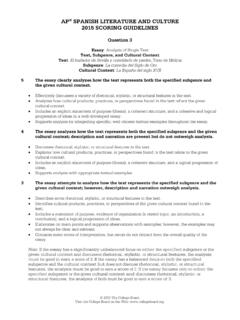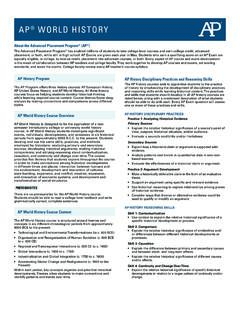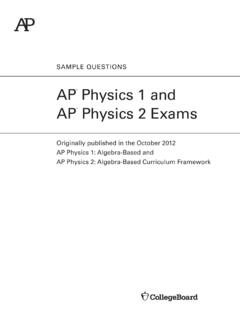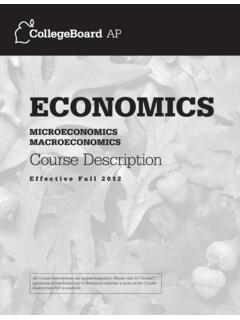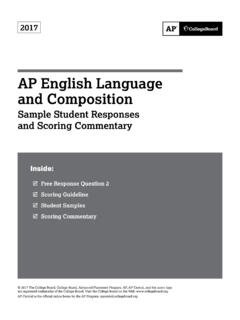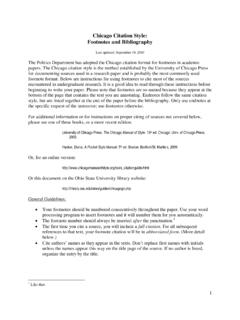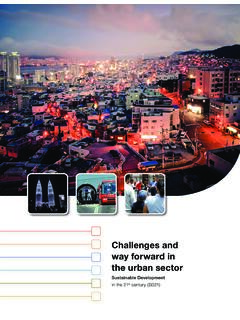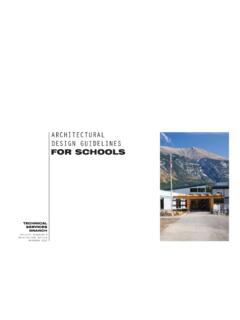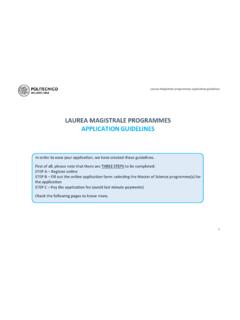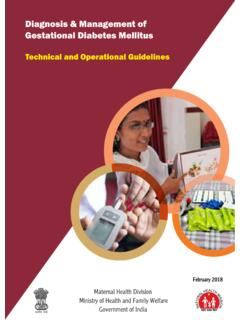Transcription of 2004 AP Human Geography Scoring Guidelines
1 AP Human Geography2004 Scoring Guidelines The College Board is a not-for-profit membership association whose mission is to connect students to college success and opportunity. Founded in 1900, the association is composed of more than 4,500 schools, colleges, universities, and other educational organizations. Each year, the College Board serves over three million students and their parents, 23,000 high schools, and 3,500 colleges through major programs and services in college admissions, guidance, assessment, financial aid, enrollment, and teaching and learning. Among its best-known programs are the SAT , the PSAT/NMSQT , and the Advanced Placement Program (AP ).
2 The College Board is committed to the principles of excellence and equity, and that commitment is embodied in all of its programs, services, activities, and concerns. For further information, visit Copyright 2004 College Entrance Examination Board. All rights reserved. College Board, Advanced Placement Program, AP, AP Central, AP Vertical Teams, APCD, Pacesetter, Pre-AP, SAT, Student Search Service, and the acorn logo are registered trademarks of the College Entrance Examination Board. PSAT/NMSQT is a registered trademark of the College Entrance Examination Board and National Merit Scholarship Corporation. Educational Testing Service and ETS are registered trademarks of Educational Testing Service.
3 Other products and services may be trademarks of their respective owners. For the College Board s online home for AP professionals, visit AP Central at The materials included in these files are intended for noncommercial use by AP teachers for course and exam preparation; permission for any other use must be sought from the Advanced Placement Program . Teachers may reproduce them, in whole or in part, in limited quantities, for face-to-face teaching purposes but may not mass distribute the materials, electronically or otherwise. This permission does not apply to any third-party copyrights contained herein. These materials and any copies made of them may not be resold, and the copyright notices must be retained as they appear here.
4 AP Human Geography 2004 Scoring Guidelines Copyright 2004 by College Entrance Examination Board. All rights reserved. Visit (for AP professionals) and (for AP students and parents). 2 Question 1 This question is concerned with the manifestation of changing global economies on the landscape. A. Define a Maquiladora: (2 points) 1 point for any 2 bulleted items, 2 points for 3-4 bulleted items Foreign owned plants located in Mexico (outsourcing) Advantage of cheap labor (sweatshops can serve as a synonym for cheap labor) Export of assembled products to the US (export processing zones) Import of product components (not acceptable: manufacturing without assembly and use of raw materials) B.
5 Refer to the map to explain the spatial distribution of maquiladoras within Mexico: (2 points) 1 point for location on the border of the US ( , Ariz., Calif., New Mexico, Texas) & Mexico, 1 point for explanation why maquiladoras are located on the border Acceptable: Close to major cities/ points of entry to the US Ease of transportation into the US Mexican government originally insisted that maquiladoras be within 35 miles of the US border Not acceptable: Low cost labor Ocean ports Physical environmental factors C. Discuss FOUR factors that explain why Mexico has emerged as an important location in the global system of industrial organization: (4 points) 1 point for each factor Labor: Inexpensive labor costs in Mexico: New/global international division of labor Political/Economic.
6 NAFTA Weak environmental regulations in Mexico Tax incentives/ No Mexican tariffs on imported parts or for exported products Mexico s stable government Mexico s stable economy Mexico s proximity to US market Mexico s expanding middle class/ urbanization/skilled labor Exploitation of less developed countries/ core-periphery model Rise of transnational corporations Use of oil as leverage in international market (equity for international loans) US shift to a tertiary economy Tourism as a source of foreign currency AP Human Geography 2004 Scoring Guidelines Copyright 2004 by College Entrance Examination Board. All rights reserved. Visit (for AP professionals) and (for AP students and parents).
7 3 Question 1 (cont d.) Location/Infrastructure - Mexico/US: Transportation connections between US and Mexico US transportation structure Not Acceptable: Landlocked countries/land bridge to South America Abundant labor source Climate Maintaining a global inequality of income (dependency theory argument) AP Human Geography 2004 Scoring Guidelines Copyright 2004 by College Entrance Examination Board. All rights reserved. Visit (for AP professionals) and (for AP students and parents). 4 Question 2 A. List TWO factors that have increased the demand for poultry. (One-word answers acceptable; 2 points) Population increase (national or global) Health benefits ( , low fat diets) Safety of poultry vs.
8 Other meats like beef & pork ( , mad cow ) Enhanced image of poultry ( , ease of preparation, appearance, marketing, advertising) Availability ( , growth of poultry-based franchises like Chick Fil-A, restaurant menus) NB Supply based arguments not acceptable Everydayness: shift in cultural tradition to the consumption of poultry more frequently (not just special occasions like Thanksgiving) Some groups have ethnic/religious/cultural taboos against beef and pork Falling prices (compared to other meats, or historically), NB Supply based arguments not acceptable B. Briefly describe TWO characteristics of the present economic organization of poultry production in the (2 points) A corporation controls multiple elements of poultry production (feed production-delivery of feed & chicks-raising-processing-marketing) ( , vertical integration/commodity chains) Large scale operations (as seen in the number of birds per farm) Specialized farms (they raise poultry only) Application of manufacturing process (mass production style/factory-like) ( , use of chemicals to produce a healthier & faster growing product, inputs-outputs, assembly line process) C.
9 Describe TWO features of the present geographic distribution of poultry production in the (2 points) Regional concentration or clustered in a particular location. NB Not acceptable: regional names only, explanations based on references to climate or grain growing Proximity to markets or transportation corridors Regional concentration in economically depressed farming areas Regional concentration in areas with low wage rates Attraction of an immigrant work force Effects of concentration of poultry into small areas ( , environmental concerns, land use conflicts), NB Ethical arguments not acceptable AP Human Geography 2004 Scoring Guidelines Copyright 2004 by College Entrance Examination Board.
10 All rights reserved. Visit (for AP professionals) and (for AP students and parents). 5 Question 3 A. (2 points) 1 point for population density and/or land rent decline with increasing distance from the CBD because there is less competition for less accessible land, 1 point for the profile dips at the CBD because commercial/industrial land users are willing/able to pay higher rent for a central location than residential land users are willing/able to pay B. (2 points) 1 point for each difference identified (see age cohorts and description in table below), 2 points maximum (not acceptable: country-scale analysis of these local-scale populations) C.
